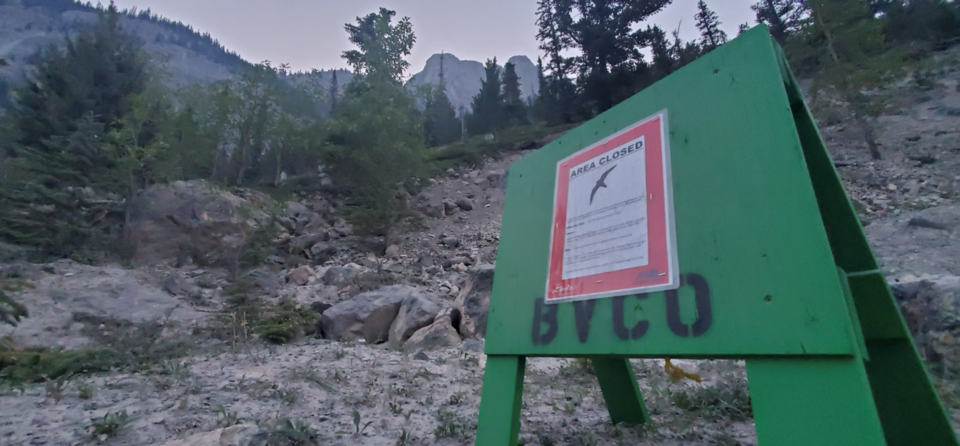CANMORE – Nesting peregrine falcons, an at-risk species on the brink of extinction in Alberta about 50 years ago and still rare in the Bow Valley, has forced the closure of a popular climbing route on the east end of Mount Rundle near Canmore.
Alberta Parks has temporarily closed the north-east ridge 5.8 climbing route on EEOR, although the elusive nesting birds of prey known to be natural cliff dwellers have affected no other climbs in the immediate area.
Jeff Moore, president of the Bow Valley Climbers Access Society, said there are no concerns with the closure of the popular climbing route in order to protect the nesting peregrines – a threatened species in Alberta.
“For wildlife and birds, climbers are pretty easy going,” he said.
“Our community is pretty lucky to have so many alternative climbing routes. It’s not like there's not other routes on the East End of Rundle to choose from that are also great quality.”
The peregrine falcon historically nested along the banks of most major rivers in Alberta, and like most populations in North America, Alberta’s peregrines suffered population declines in the 1950s and 1960s associated with the widespread use of organochlorine pesticides, most notably DDT.
However, use of DDT was banned throughout North America by 1972, and following captive-breeding program reintroductions, Alberta’s peregrine falcon population has rebounded to an estimated 65 to 75 nesting pairs province-wide from only two to three pairs in all of Alberta in 1970.
Peregrine falcons were down-listed from endangered to a threatened species in 2000 in recognition of an increasing population, a measured reduction in pesticide residues in peregrine falcon tissues, and demonstrated improvements in reproduction.
Bird expert and independent biologist Jason Rogers, who is an eBird editor for much of southern Alberta and compiled Parks Canada’s 2022 Checklist of Birds in Banff National Park, also welcomed the move to close the climbing route on EEOR in the short-term to help with conservation of the species.
He said peregrine falcons historically haven’t had much of a presence in the Bow Valley outside of the migration periods and post-breeding season, when peregrines may wander before commencing fall migration south.
While there has been a significant recovery in the provincial breeding population, thanks to the ban on DDT and the captive breeding, translocation, and fostering of young peregrines to wild nests, Rogers said nesting peregrines in the Bow Valley remain elusive.
“There was evidence that the birds were nesting on Mount Yamnuska during the late 1980s, and I observed a likely breeding pair in this area in 2004. In 2019, a pair was photographed near Castle Mountain,” he said.
Rogers said there have also been confirmed and unconfirmed summer observations in the Banff area since 2022 of adult peregrines calling and carrying prey such as a gull, which are both potential signs of breeding.
“This may be evidence of a more widespread recovery, as a nest with young has been confirmed at a historical breeding location in Jasper National Park this year,” he said.
Alberta’s breeding peregrines are known to winter in places like southern Mexico, Belize, and Colombia.
“With DDT still used in parts of the world, including South America, for things like malaria control, and because DDT persists in the environment, peregrines shouldn’t be considered out of the woods yet,” Rogers said.
According to Alberta’s updated 2021 recovery plan for the species, peregrine falcon clutches usually contain four eggs, but clutches of five have been recorded on several occasions in Alberta, with an average fledging success of about 1.5 young/pair recorded in Alberta over the last two decades.
The earliest recorded date for clutch initiation is April 26, while the latest clutch initiation for Alberta was estimated to be June 12-14. Both male and female adult peregrines incubate the eggs, which lasts anywhere from 28 to 33 days.
Young fledge at 40 to 46 days of age, with juvenile males usually fledging before females. Most birds leave Alberta for wintering grounds by the end of the first week in October.
Alberta Parks did not get back to the Outlook on the EEOR climbing closure by publication despite repeated requests.




